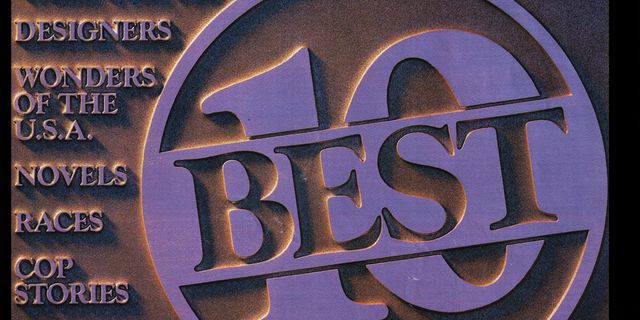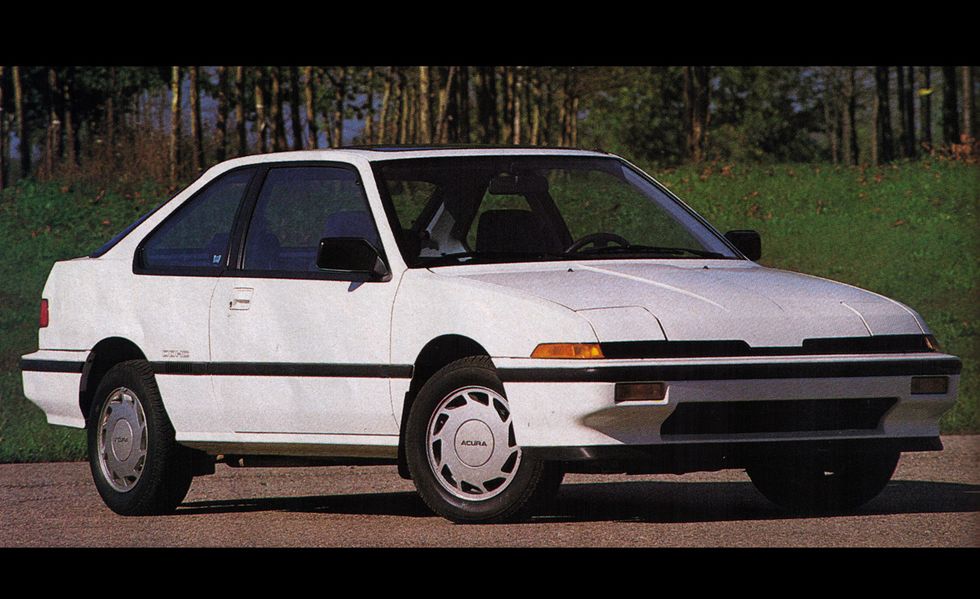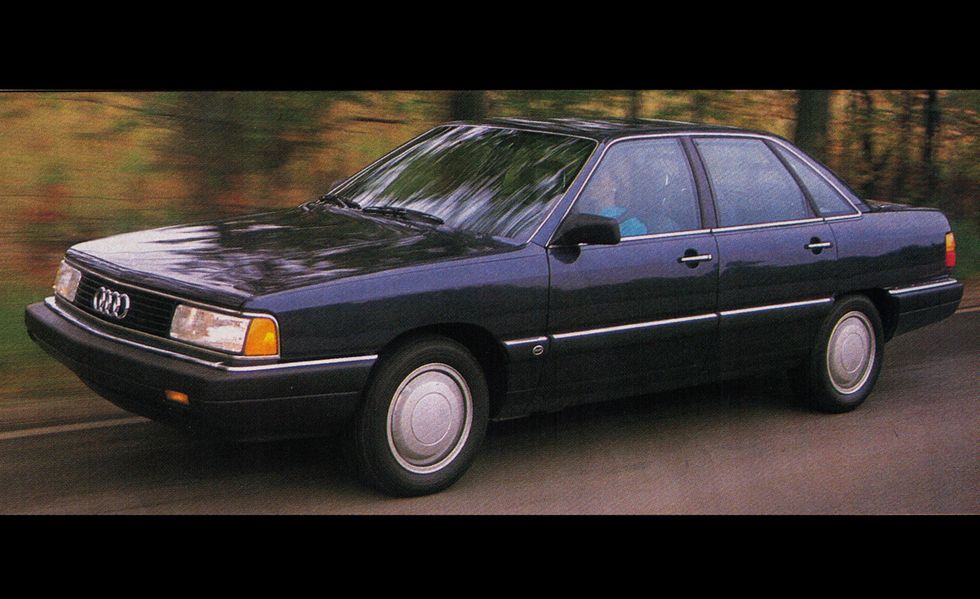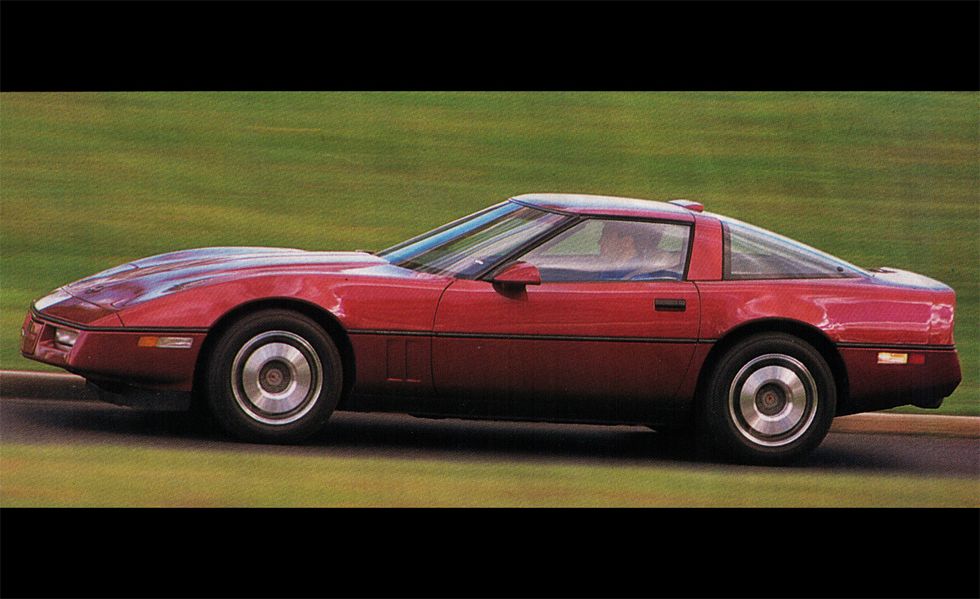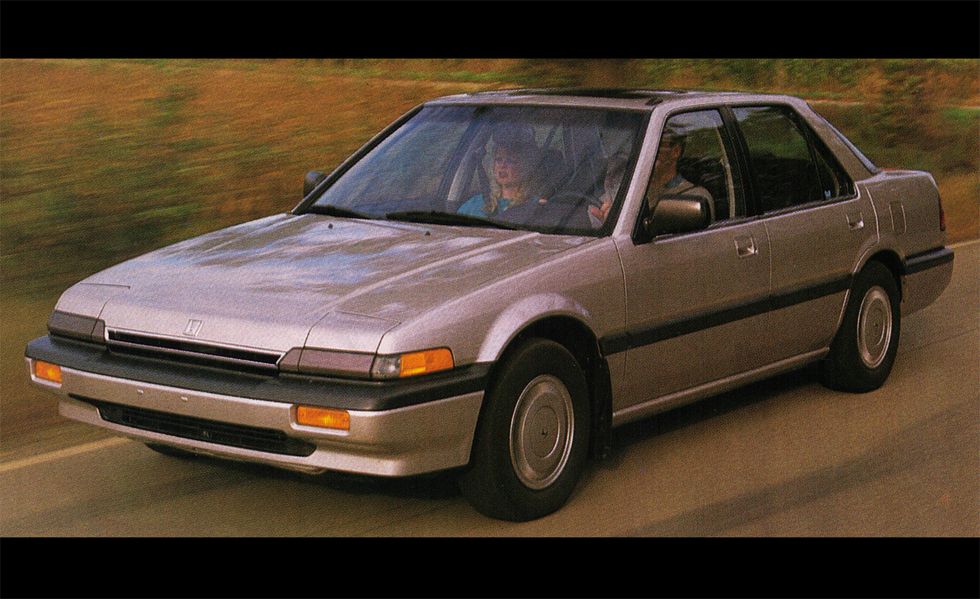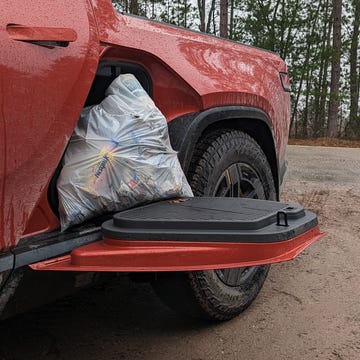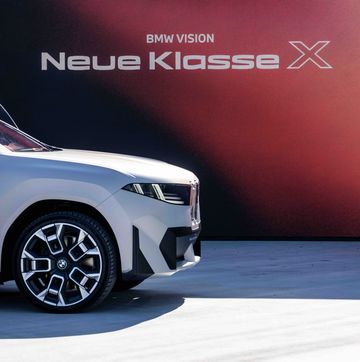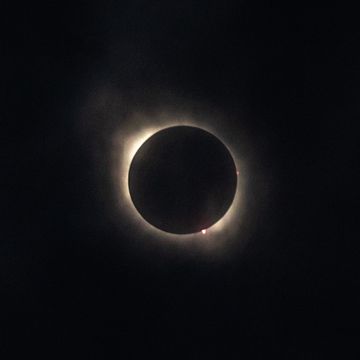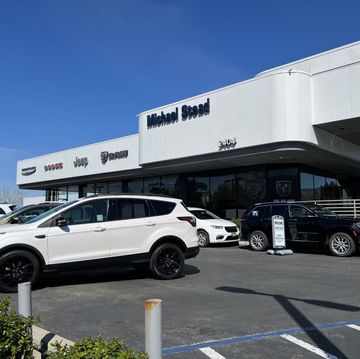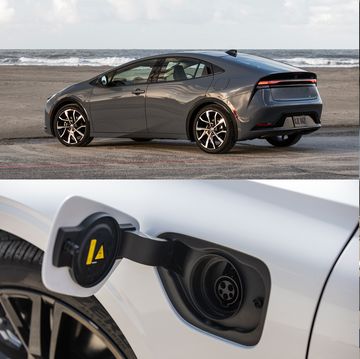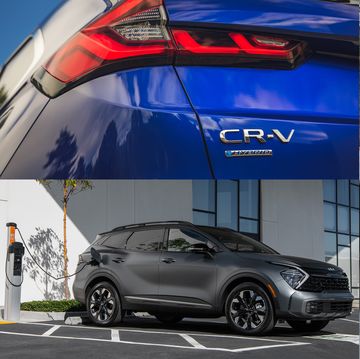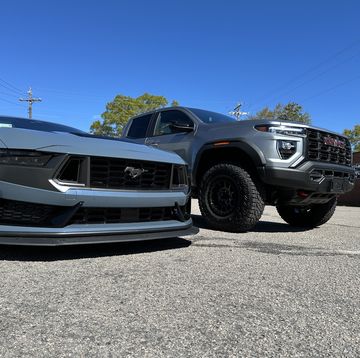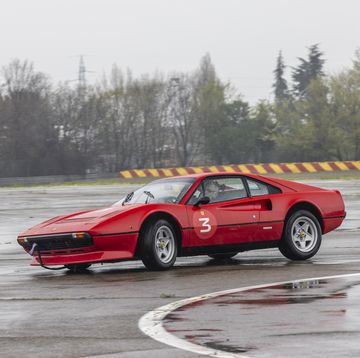We modestly title our annual celebration of automotive excellence “Ten Best,” but this January issue is filled to the borders with more than a hundred examples of the greatest things in life. If you’re not already in a festive frame of mind, you soon will be: there’s more than enough inspiration here to lift your holiday spirit to the rafters and to keep you humming on a high plane well into the new year.
As usual, we’ve thrown caution to the wind in naming the Ten Best Cars. Neither inclement weather, nor Nader, nor threat of recall can keep us from our appointed rounds. We’ve let you readers into the editorial act this year with the Ten Best Wild Things, and the results are precisely as we expected: demented, perverse, provocative, and wholly entertaining. Rich Ceppos stayed awake nights to determine the Ten Best Cars That Changed the World. Csaba Csere programmed the C/D computer to reveal this year’s Ten Best Performers. Yates racked his brain and buttonholed his cronies to name the Ten Best Races of All Time. Our Hollywood correspondent, Tony Assenza, picked the Ten Best Winners and Losers of the year. Patrick Bedard searched from sea to shining sea for the Ten Best Wonders of the U.S.A. And Mike Jordan pored over 101 years of automotive history to name the Ten Best Designers. To leaven this heady blend of facts and figures with a dollop or two of pure fiction, Mary Beth Lewis (no relation to Sinclair) has reviewed the Ten Best Novels of the Road.
It is our intention to send you on your way with enough forward momentum to carry you to Valentine’s Day, but just in case some officer of the law finds fault with your rate of progress, we offer Don Coulter’s collection of Ten Best Cop Stories. Since they come from the more brazen alleged perpetrators in the audience, no warranty as to their effectiveness is expressed or implied.
And in other news that year:
Top-selling Cars:
Winner of Super Bowl XIX:
Winner of the Academy Award for Best Picture:
Winner of the World Series:
Sources: Top-selling Cars, Ward's Automotive Year Book; Super Bowl Winners, SuperBowl.com; Best Picture Winners, Oscars.org; World Series Winners, WorldSeries.com
1987 Acura Integra
The average Joe has probably never heard of this automobile, and it’s a fair bet that he hasn’t a clue to the correct pronunciation of its nameplate (ohyer-uh in-t-ruh). Fame and fortune are seldom won overnight, but the sporty no-name models from Honda are well on their way toward winning friends and influencing C/D editors. We like everything about the three- and five-door Integras—their snappy sixteen-valve engines, their sporty good looks, their usefully roomy interiors, and their fun-to-drive personalities. Most of all, we like the value they represent. Base prices start below the magic ten-grand figure, and this is not for stripper accommodation by any means. A spendthrift who goes nuts with the options list might blow the tab all the way up to fifteen thousand, but we doubt very much that he’ll regret the investment.
Acura dealers are off to a slow start, but don’t forget that Honda retailers also struggled in their early years. Our advice is to take advantage of this introductory period to grab a good deal while you can. There was a time, long ago, when Mercedes automobiles were affordable too, you know.
Specifications
VEHICLE TYPE
front-engine, front-wheel-drive, 5-passenger, 3- or 5-door sedan
BASE PRICE
$9859–12,689
ENGINE TYPE
4-in-line, aluminum block and head, Honda electronic fuel injection
Displacement
97 cu in, 1590 cc
Power
113 hp @ 6250 rpm
TRANSMISSIONS
5-speed, 4-speed auto
DIMENSIONS
Wheelbase: 96.5–99.2 in
Length: 168.5–171.3 in
Curb weight: 2350–2450 lb
EPA FUEL ECONOMY
City driving (est.): 25–26 mpg
1987 Audi 5000 / CS Turbo
The Audi 5000CS Turbo Quattro, which won a Ten Best berth last year, has moved on to bigger and better things in the over-$30,000 price class, but it has adroitly handed the baton off to two Audis of slightly lesser stripe. The base 5000S model brings more power to the party for 1987, and the 5000CS Turbo is now offered with a five-speed transmission. The two share this spot on the Ten Best list, keeping Audi's winning streak intact.
Since its introduction in 1982, the current 5000 line has been the silver-plated standard of modern sophisticated sedans. Its combination of clean, contemporary styling, functional interior design, and stirring performance has so far eluded imitation.
But Audi has by no means stopped polishing the product, for rust and the competition never sleep. While the former has been taken care of with two-side galvanizing of all the 5000's sheetmetal, only hard work will fend off the latter: the over-twenty-grand bracket, where the grosser Audis ply their trade, is noe a hotly contested segment. Japan cracked this European stronghold during 1986, and a number of American makers have made known their intentions of competing here, so Audi is bound to have an increasingly tough time protecting its turf.
Specifications
VEHICLE TYPE
front-engine, front-wheel-drive, 5-passenger, 4-door sedan or 5-door wagon
BASE PRICE
$20,060–26,640
ENGINE TYPES
5-in-line or turbocharged and intercooled 5-in-line, iron block and aluminum head, Bosch KE-Jetronic fuel injection
Displacement
136 cu in, 2226 cc
Power
130-162 hp
TRANSMISSIONS
5-speed, 3-speed auto
DIMENSIONS
Wheelbase: 105.8 in
Length: 192.7 in
Curb weight: 2850–3100 lb
EPA FUEL ECONOMY
City driving (est.): 17–19 mpg
1987 Chevrolet Corvette
Unless you're deaf to our counterpoints, you know that the Chevrolet Corvette is one of the most controversial automobiles to ever grace the C/D parking lot. Certain staff members find plenty of fault with this car, while others lust after the bolide from Bowling Green with a fervor that surpasses all dissension. Despite such squabbling, the plastic-fantastic machine earned enough votes to protect its seat on the Ten Best list.
The Corvette benefits from no major design breakthroughs or improvements for the 1987 model year, though both its horsepower and its torque are up slightly. In addition, if durability issues can be resloved, Chevrolet may add a low-tire-pressure warning system, unveiled months ago. In truth, the Corvette needed a slack year in the schedule to give the development staff a chance to purge the squeaks, rattles, and niggling faults that have plagued this performance king since its 1983 redesign. When you've got a 150-mph runner strapped to your backside, you shouldn't have to worry that the headlamps might not light on cue. Year by year, the Corvette's suspension has become more supple, its engine more potent, its brakes more effective. As long as there is net progress toward the goal of speed with civility, the Corvette's detractors won't gain a leg to stand on.
Specifications
VEHICLE TYPE
front-engine, rear-wheel-drive, 2-passenger, 3-door coupe or 2-door convertible
BASE PRICE
$27,999–33,172
ENGINE TYPE
V-8, iron block and aluminum heads, GM electronic engine-control system
Displacement
350 cu in, 5733 cc
Power
240 hp @ 4000 rpm
TRANSMISSIONS
7-speed, 4-speed auto
DIMENSIONS
Wheelbase: 96.0 in
Length: 176.0 in
Curb weight: 3250 lb
EPA FUEL ECONOMY
City driving (est.): 16–17 mpg
1987 Ford Mustang GT
Those of you who held fast to your faith in the V-8 were right! The sophisticated but small-engined SVO Mustang is now but a memory, while the GT V-8 lives on, feistier than ever. The hairy-chested Mustang, in the ninth year of its existence, is as fit as a bass violin, thanks to the year-by-year improvement program instituted by Ford chairman Donald Peterson.
The new model year brings the GT a whopping 25-horsepower addition to its power peak, slicked-up aerodynamics, a modernized instrument panel, and another round of suspension adjustments. One drive of this machine is enough to give even the most jaded autophile a fresh outlook on motor vehicles. The Mustang GT's engine is a tower of power, and its five-speed is magic in your hands. There's more than enough torque here to wind the speedometer needle like a clock---and pity the IROC Camaros bold enough to roll alongside to ask for the time.
It's remarkable that we're not talking eighteen to twenty big ones for the fastest Ford in all the land. Prices start at a mere $12,106, the 225-horsepower engine included. In terms of bang for the buck, this one delivers in megatons.
Specifications
VEHICLE TYPE
front-engine, rear-wheel-drive, 4-passenger, 3-door sedan or 2-door convertible
BASE PRICE
$12,106–15,852
ENGINE TYPE
V-8, iron block and heads, Ford EEC-IV engine-control system
Displacement
302 cu in, 4942 cc
Power
225 hp @ 4200 rpm
TRANSMISSIONS
5-speed, 4-speed auto
DIMENSIONS
Wheelbase: 100.5 in
Length: 179.6 in
Curb weight: 3100–3200 lb
EPA FUEL ECONOMY
City driving (est.): 17 mpg
1987 Ford Taurus
We risked our good name last year in naming the Ford Taurus and its sister, the Mercury Sable, to this list, even though they were mere infants. The buying public has since confirmed the wisdom of our decision, as the aero pair from the Ford Motor Company has far surpassed everyones sales expectations. Plaudits and praise have rolled in from all quarters. Roger B. Smith, the chairman of General Motors, went so far as to call them "sexy... nice-looking cars."
Yes, it's the look that catches everyone's attention, but appearances alone do not a Ten Best winner make. The Ford Taurus (this year's solo winner) is a tidy car to drive as well. Its steering is surprisingly direct, and its road manners are confidence-inspiring. Its interior is a bold attempt to reorder the priorities of American-made family sedans. Function is foremost in the Taurus, which means that the placement of its seats and controls has been given far more emphasis than is usual in a mainstream Ford. Comfort is still important here, but the simulated-living-room approach doesn't play. The Taurus's interior looks and feels like the inside of a modern automobile, not your aunt's front parlor.
It isn't just the car nuts that admire Ford's new design direction: former LTD owners have even made the leap of faith. Thanks to the Taurus, the state of the family-sedan art has changed forever.
Specifications
VEHICLE TYPE
front-engine, front-wheel-drive, 5-, 6-, or 8-passenger, 4-door sedan or 5-door wagon
BASE PRICE
$10,650–15,243
ENGINE TYPES
4-in-line or V-6, iron block and head(s), Ford EEC-IV engine-control system
Displacement
153–182 cu in, 2499–2986 cc
Power
90-140 hp
TRANSMISSIONS
5-speed, 3- or 4-speed auto
DIMENSIONS
Wheelbase: 106.0 in
Length: 188.4–191.9 in
Curb weight: 2900–3300 lb
EPA FUEL ECONOMY
City driving (est.): 19–23 mpg
1987 Honda Accord
The Honda Accord, back by unanimous acclaim, now has a five-year membership in the Ten Best club. Quietly and harmoniously, this small sedan from Ohio goes about its business with an aplomb that most manufacturers can only envy.
After the complete redesign of 1986, Honda hasn't changed a thing this year. Perpetually ahead of its time, the Accord will coast through 1987, winning new customers and pampering existing owners with the simple goodness of a family sedan done right.
The Accord looks a lot like the $20,000 Acura Legend, a fact that is not lost on smart shoppers. It glides through life with superb aerodynamics, an efficient engine, and a chassis that should be eligible for an honorary Weight Watchers degree. Part sports car, part limousine, part econobox, the Accord is as close to the universally acceptable automobile as the industry has ever come.
It's hard to imagine, but engineers and technicians in Japan are doubtless planning a new Accord to replace today's model in a couple of years. Short of remodeling the Sistine Chapel or overhauling the Acropolis, we can't conceive of a tougher undertaking.
Specifications
VEHICLE TYPE
front-engine, front-wheel-drive, 5-passenger, 3- or 4-door sedan
BASE PRICE
$9795–14,959
ENGINE TYPES
4-in-line, iron block and aluminum head, 1x2-bbl Keihin carburetor or Honda electronic fuel injection
Displacement
119 cu in, 1955 cc
Power
98-110 hp
TRANSMISSIONS
5-speed, 4-speed auto
DIMENSIONS
Wheelbase: 102.4 in
Length: 174.8–178.5 in
Curb weight: 2450–2600 lb
EPA FUEL ECONOMY
City driving (est.): 24–27 mpg
1987 Mazda RX-7 Turbo
We had mixed emotions about the second-generation Mazda RX-7 when it debuted a little more than a year ago. Its styling was too familiar, its rear suspension was an enigma, and its price was no longer what we'd call irresistible. In the midst of our quandary, Mazda followed its initial move with a turbocharged and intercooled model. A little extra power can do wonders, it clears the vision, sets your head on straight, and knocks the inconsequential issues out of contention. Not only is the 182-horsepower RX-7 Turbo an attention grabber, it's one car that we understand perfectly.
Fatter tires, wider wheels, and larger brakes are all a part of the Turbo deal. In addition, several options apply to this car, just as they do to normally aspirated models: power steering, superb stereo equipment (including a compact-disc player), and aero accouterments. ABS brakes are new for 1987.
Obviously, the Turbo is what Mazda had in mind from the beginning. The normally aspirated model was merely a facesaver to span the large gap between the first and second generations. Now that the RX-7 is playing for $20,000 stakes, the game is for keeps, and the Turbo edition has what it takes to win its share.
Specifications
VEHICLE TYPE
front-engine, rear-wheel-drive, 2-passenger, 3-door coupe
BASE PRICE
$20,399
ENGINE TYPE
turbocharged and intercooled 2-rotor Wankel, aluminum rotor housings, cast-iron end plates, Mazda electronic engine-control system
Displacement
80 cu in, 1308 cc
Power
182 hp @ 6500 rpm
TRANSMISSION
5-speed
DIMENSIONS
Wheelbase: 95.7 in
Length: 168.9 in
Curb weight: 2900 lb
EPA FUEL ECONOMY
City driving (est.): 17 mpg
1987 Pontiac Bonneville SE
The new Bonneville SE, from the GM division that has built the very best made-in-America Eurosedans over the years, might be considered a second-generation of the successful 6000STE. Based on a larger chassis, shared with Buick's LeSabre and Oldsmobile's Delta 88, the new Bonneville replaces both the old rear-driver of the same name and the eminently forgettable Parisienne four-door. (The STE and the rest of the 6000 line live on.)
With this new SE, Pontiac acknowledges that a sports sedan doesn't have to have a punishing ride. The front-drive Bonneville knows its way down a winding road, but it doesn’t make you wish you’d bought an Oldsmobile when you encounter expansion joints on the freeway.
The SE’s interior is the closest thing to a BMW’s this side of the Black Forest. A sculptured cowl sweeps majestically over a generous array of instruments, and there isn’t a winking digit in the lot. The 85-mph speedometer is a faux pas, but Pontiac’s chief engineer promises it will be uprated before you can say, “But, Officer!”
The seats are firm, the woodgrain convincing, and the knee- room plentiful. Under the hood, Buick’s venerable V-6 works hard but doesn’t complain a bit. For once, GM’s four-speed automatic transaxle makes all the right moves at the right time.
Clearly, we haven’t seen the last of the big cars. As long as they have the goodness of a Bonneville SE, we’ll root for their perpetual existence.
Specifications
VEHICLE TYPE
front-engine, front-wheel-drive, 5-passenger, 4-door sedan
BASE PRICE
$15,806
ENGINE TYPE
V-6, iron block and heads, GM electronic engine-control system
Displacement
231 cu in, 3791 cc
Power
150 hp @ 4400 rpm
TRANSMISSION
4-speed auto
DIMENSIONS
Wheelbase: 110.8 in
Length: 198.7 in
Curb weight: 3350 lb
EPA FUEL ECONOMY
City driving (est.): 18 mpg
1987 Saab 9000 Turbo
If you were ahead of the game, you bought your Saab 9000 Turbo last year, when the price was $3500 less and the dew was still on the melon. Now that the word is out—this is the Saab to end all Saabs—the price is up in the BMW-and-Mercedes range and the 9000 Turbo is no longer a steal.
It’s still a nifty car. Easily the best-looking Saab of the century, the 9000 is also the fastest. It will clock 140 mph without panting, and you don’t need the Bonneville Salt Flats to achieve terminal velocity. The poise at extralegal speeds is remarkable; the comfort at any speed is practically flawless. You sit tall on supportive seats and view the road across a seamless expanse of wind-tunnel-shaped sheetmetal. The cockpit is ergonomically correct, and the interior is as roomy as a Pullman.
As balm for those wounded by this year’s price escalation, Saab will offer its supersedan minus the turbocharger and intercooler at a significantly lower price. The base tab for this 125-horsepower 9000S model is $21,805. If this proposition interests you, we recommend keeping your distance from the 9000S’s big brother. The Turbo is like forbidden fruit: once you taste it, settling for less is too much to ask, no matter the price.
Specifications
VEHICLE TYPE
front-engine, front-wheel-drive, 5-passenger, 5-door sedan
BASE PRICE
$25,515–26,065
ENGINE TYPE
turbocharged and intercooled 4-in-line, iron block and aluminum head, Bosch LH-Jetronic fuel injection
Displacement
121 cu in, 1985 cc
Power
160 hp @ 5500 rpm
TRANSMISSIONS
5-speed, 4-speed auto
DIMENSIONS
Wheelbase: 105.2 in
Length: 181.9 in
Curb weight: 3000 lb
EPA FUEL ECONOMY
City driving (est.): 19–21 mpg
1987 Toyota MR2
We’re not elated with some of the fiddling Toyota has done with our MR2—four-season tires, ill-advised suspension adjustments, and a T-roof are “improvements” for 1987— but Mister Two is still worthy of Ten Best honors.
The MR2 is the essence of sporting fun: quick, agile, and always eager for a fling. Toyota’s two-seater has the spirit that various imitation sportsters never quite achieve. Although it will never be mistaken for an Italianesque thing of beauty, the MR2 has the soul of a Ferrari factored down to four-cylinder affordability. It revs like a Wood Brothers’ air wrench, shifts like a formula car, and clips apexes with surgical precision. Once you’ve sampled the magic that’s possible in a well-executed mid-engined machine like the MR2, you’ll never swallow the front-wheel- drive sales pitch again.
It wasn’t too long ago that four-valve combustion chambers, fuel injection, and tuned induction were exclusive to race cars. Having such exotic hardware in a car that’s everyday-reliable is one of the true wonders of the eighties, even if it often takes $15,000 or more to pry one out of a dealer’s hands. Next year’s Ten Best list may have to be printed in invisible ink to keep prices from escalating.
Specifications
VEHICLE TYPE
mid-engine, rear-wheel-drive, 2-passenger, 2-door coupe
BASE PRICE
$12,548–14,428
ENGINE TYPE
4-in-line, iron block and aluminum head, Toyota electronic engine-control system
Displacement
97 cu in, 1587 cc
Power
112 hp @ 6600 rpm
TRANSMISSIONS
5-speed, 4-speed auto
DIMENSIONS
Wheelbase: 91.3 in
Length: 154.5 in
Curb weight: 2400 lb
EPA FUEL ECONOMY
City driving (est.): 25–26 mpg
